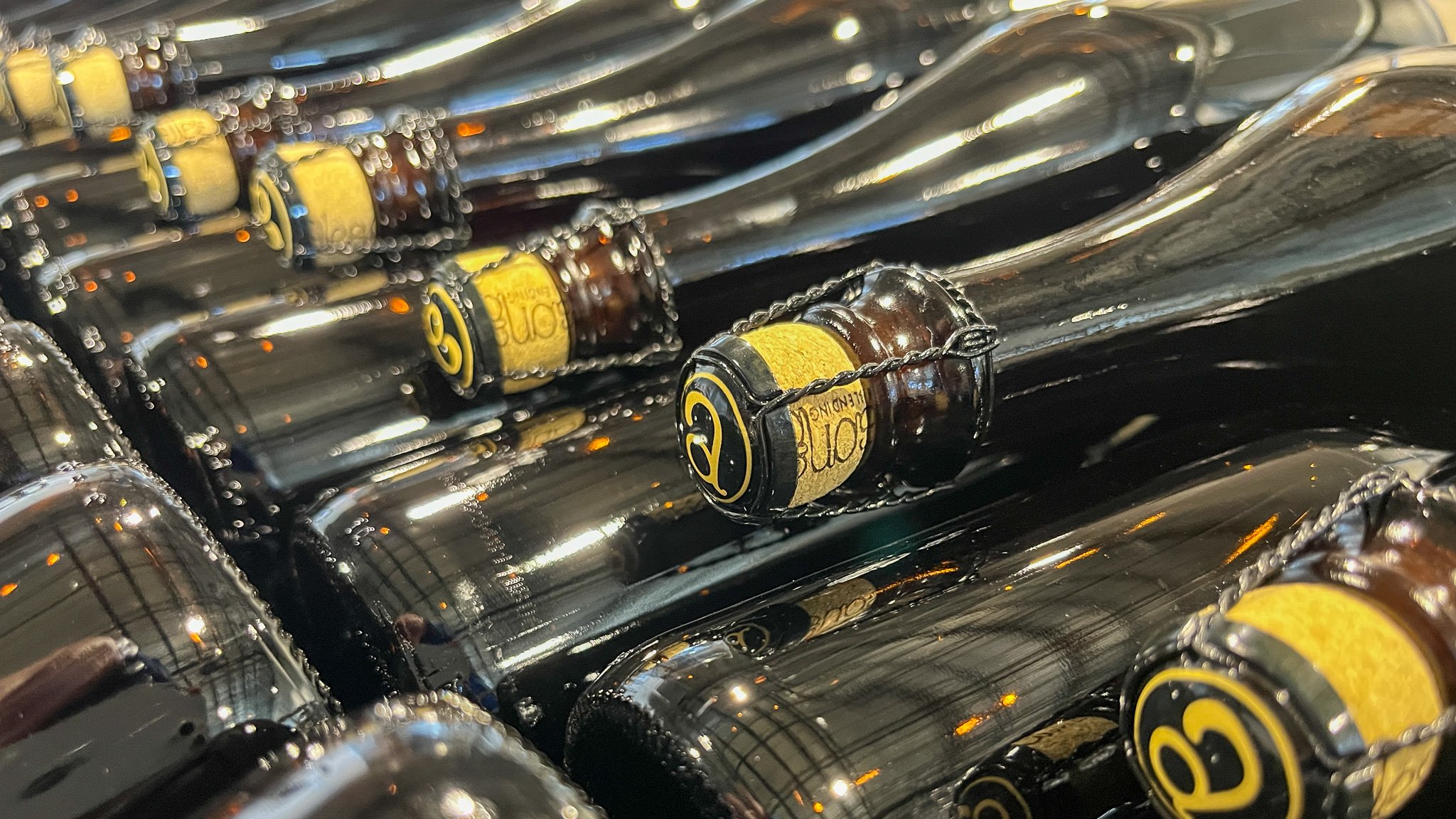Bottle Conditioning
The majority of the beers we make at Alesong are bottle conditioned, which is just a fancy way of saying carbonated in the bottle. There are two main techniques of carbonating beer, the first, and most widely used by breweries is called force carbonating - accomplished by adding CO2 pressure to a tank until the CO2 dissolves into solution in the finished beer. The second is called bottle conditioning, which as the name implies, occurs in the bottle through a secondary (or tertiary) fermentation. This means that we add a carefully calculated amount of yeast and sugar to the final blend as it's being packaged. As the sugar is fermented, CO2 is produced, resulting in a (hopefully) perfectly carbonated beer.
As you can imagine, bottle conditioning is a little harder to get just right, but we believe it's worth the trouble because, in our opinion, it makes better beer. First, the additional fermentation that occurs in the bottle functions to remove all of the oxygen from the package, which allows the beer to age much longer than if there was oxygen present. Second, the CO2 that is created naturally has a tendency to stay in solution better which results in better head retention and smaller bubbles. And most importantly, the fermentation in the bottle adds depth and character to the beer, especially if you ferment with a wild yeast or interesting sugar source such as fruit or honey.
How to Serve Your Bottle Conditioned Beer
As a consumer, really what you need to know is that in exchange for a better beer, you have to take a little more care in how you pour your beer so as not to stir up all of the yeast that remains at the bottom of the bottle. It's pretty simple, actually, as long as you follow a few key steps:
Chill your beer before serving. This will help the yeast to all consolidate at the bottom of the bottle and may prevent you from opening a beer that pours foam everywhere.
Try not to shake it too much. Seems obvious, but what we mean more here is that you should try to avoid pouring one glass at a time and setting the bottle upright in between because every time you do that the beer swishes back down the side of the bottle and stirs up the yeast at the bottom. (In Belgium, beer is often served in a Lambic basket, that keeps the bottle tilted on its side between pours for just that purpose.) Typically it's easiest to find a friend or two to share it with and pour the whole bottle at once so you don't need to set it down.
Leave the final ounce in the bottle. If you've been careful, this ounce will contain all of the yeast. It's not harmful at all to consume, but won't look as nice or taste quite as good as the rest of the beer.
Enjoy your beer! Prost!

